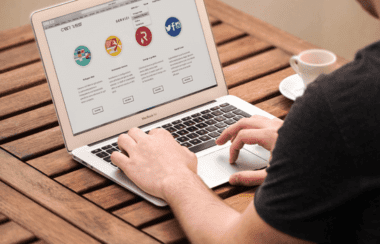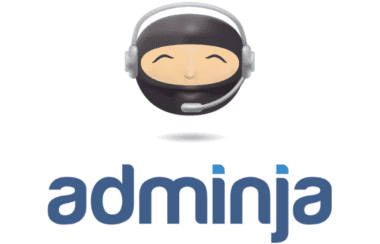How to Price Yourself as a Freelancer (When You’re Starting Out)
By Jena Kroeker

Deciding how to price yourself as a freelancer reminds me of the time I saw a $51 brownie in a store. Not a box of brownies. Not a whole pan. A single brownie.
And with classic understatement, my husband showed it to a cashier and said, “This brownie is a little overpriced.” We knew it was a mistake. But if not, we thought, “Who do they think they are, pricing a single brownie at $51?”
When you’re just starting out, either launching a whole new business or transitioning to a new niche, you might imagine people saying the same thing about your prices:
“Who do you think you are?”
We discussed these types of doubts in a previous blog post, “How to Gain Experience (and Credibility) When You Have None!” For instance, you might feel like a kid with a lemonade stand, yearning to be taken seriously. You’re the new kid on the block, and you want to do more than hand out free samples. You want to price your services fairly and competitively.
But how do you do that when you’re just starting out? Here are five tips to help you decide on appropriate pricing.
How to Price Yourself as a Freelancer When You’re Starting Out in Business or a New Niche
1. Remember you’re better than you think.
“You’re better than you think” is a familiar refrain to Freelance University students. It’s wise encouragement from FreeU co-founder and instructor Craig Cannings to combat feelings of self-doubt or imposter syndrome.
As Olivia De Santos says in her article, “How To Know Your Worth & Price Your Services Confidently,” imposter syndrome can lead to “underrating your expertise” and short-changing your services. Specifically, she warns,
“If you feel like you’re not good enough for the big bucks, you won’t ask for them.
“And can you charge too little? Absolutely! There is such a thing as being too cheap, where your dream clients won’t even consider you because they think you are low quality.”
She also describes the “ick factor,” which makes you uncomfortable receiving an amount of money that seems too high. So, before you begin setting prices, examine your feelings and determine whether you need to build your confidence.
In a recent FreeU podcast episode, Nachum Kligman refers to the importance of having a “high perceived value.” This type of confidence not only helps you present yourself with the mindset of a successful entrepreneur, but also impacts the way you price your services. If you think poorly of your skills and lack confidence, you’ll underestimate the value you offer clients.
It’s a fine balance, but keep in mind Craig’s tips from FreeU’s Pricing Your Freelance Services course:
• If you price too low, you could hurt your credibility and authority as a specialist in your field.
• If you price too high, you could find it harder to attract your ideal clients who don’t have that budget, securing one-time projects but not long-term relationships.
2. Determine your expenses and desired income.
Now, let’s start crunching the numbers that will help you define your freelance or virtual assistant rates. First of all, as Craig advises in the course above, determine your income goals, specifically a realistic monthly income you’d like to generate before taxes. To come up with this calculation, you’ll also need to know how many hours you’re willing and able to work each week.
Next, identify all your business expenses. These could include the following:
• Software subscriptions
• Courses and training
• Office equipment and supplies
• Taxes
• Business insurance and licenses
• Advertising/marketing costs
• Administrative hours (e.g. billing clients).
An article titled “Pricing 101 – Here’s how to price yourself as a freelancer,” recommends consulting an accountant about possible income tax amounts. But if you don’t have an accountant, “it’s a good rule of thumb to expect to pay 25% of your earnings after you subtract your business expenses.”
With these numbers, you can calculate what Natalia Campana calls your “Minimum Acceptable Rate (MAR)” in her article, “How to set your rates as a freelancer.”
She provides the following formula:
“((living costs + overhead business costs + salary) / (hours worked a year)) + tax”
And she warns against actually using this rate, stressing that “while we do not recommend working for your MAR, this is a good starting point for freelancers looking to get a foot into the freelancing world.” As we’ll see below, your experience and skills can impact what your MAR would be.
3. Assess your skills and experience.
Now that you’ve determined your goals, inventory your specific skills and experience including transferable skills you bring to your new niche or business. These factors will help you determine how to price your freelance services.
Then, as Craig recommends in the course above, outline the specific set of services you’re intending to offer clients. This includes breaking down a full list of tasks involved with each service or package you’re designing. And, if possible, estimate how long it’ll take you to complete each task. Since this is harder to do with new services, one option is to try doing some test runs of the tasks.
An article titled “How To Price Your Services At The Startup Phase” provides some valuable perspective and food for thought. This is also true for those who have had a freelance or virtual assistant business for a while and are transitioning to a new niche:
“Yes, you’ve left the corporate world behind, but that does not mean that you need to start again from square one. Your experience is your most valuable asset. Do some research to determine your level of expertise relative to other freelancers in your industry.
“If you feel that your previous experiences place you above the majority of your competitors, then don’t be afraid to ask for more money.”
So, in essence, your skills and experience can raise your MAR and the rate you ultimately decide to charge.
4. Research your freelance or virtual assistant niche.
Now it’s time to see what others are charging for your services and what the market can handle. This will help prevent the “$51 brownie” phenomenon and provide some realistic context for your goals. In the course above, Craig shares the following tips:
• Research blogs, industry associations, Facebook and LinkedIn groups to identify the “going rates” based on hourly and package pricing.
• Review 5-10 freelance or virtual assistant websites to determine how they’re pricing their services.
He also recommends keeping in mind that new freelancers may start at a rate that’s 10-20% lower than the average rate.
To supplement these tips, the article above recommends asking acquaintances or friends what they charge in the same niche. And at the same time, compare your portfolio, skills, and professional experience to theirs and to those of other freelancers online. Above all, the article stresses,
“You don’t want to price yourself out of the market, but you still need to be paid fairly for the time and effort you put into your work, as well as for your talent and skill. You also need to make a living! Remember, there’s only one thing worse than charging a client too much–not charging enough.”
5. Choose an appropriate pricing strategy.
When you’re deciding how to price your freelance services as a new business or new niche, some strategies work better than others. For example, in a previous FreeU blog post, “Five Mistakes to Avoid When Pricing Your Freelance Services,” we recommend staying away from retainers, packages, and flat rates until you know how long it’ll take you to complete a task or project. Instead, research the project to determine its scope. If necessary, charge hourly to start, and then transition to a package or retainer rate once you know how much time you’re spending on each task.
Although the hourly model is the most popular one with new freelancers, be wary of maintaining it for too long. As you gain experience and skills, it’ll become less profitable for you in the long term. As the article above says, if your expertise and experience result in your performing a task quickly, “this doesn’t mean the knowledge only costs 10 minutes.”
As an illustration, I once talked with a fellow freelancer who was searching for a word to use in a piece of content. He had been scrolling through an online thesaurus for 20 minutes with no luck. I asked him what he was looking for and recognized it as a topic I had written about before. In one second, I thought of a word he could use. He said that was exactly the word he wanted.
Since I’ve worked as a writer and editor for years, I was familiar with that vocabulary and could quickly recall it. But if I were charging by the hour, how would I bill for one second of work? I would ultimately be penalized for my speed and knowledge.
This is where a flat-rate project price can help. So, if you’re able to correctly estimate how long a project will take, this is a good model to use with a new client. It works well for one-off projects when you’re just starting out, while at the same time accounting for your existing skills and experience.
Also, consider these factors when determining how to price your freelance services:
• Adjust your rate depending on whether your client is a for-profit business or a nonprofit organization.
• Charge a rush fee for tasks given with less than 24 hours’ notice or on evenings, weekends, and holidays.
Final Thoughts and Encouragement
We hope these tips have given you greater confidence and a clearer idea of how to price freelance services when you’re just starting out. Remember, as a freelancer or virtual assistant, flexibility and continuous learning are key. As time goes on, remain vigilant, and be prepared to adjust your rates depending on the market and your growing skills.
If you have any further tips you’d recommend, please share them in the comments below. We’re all in this together and can support each other, no matter what stage we’re at in our businesses.









































































































